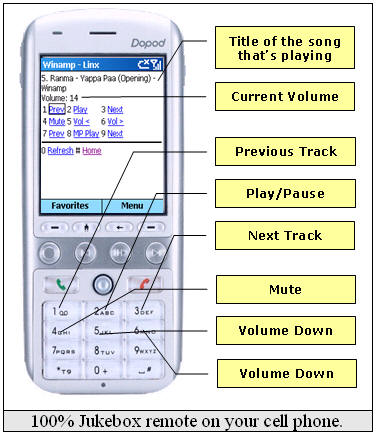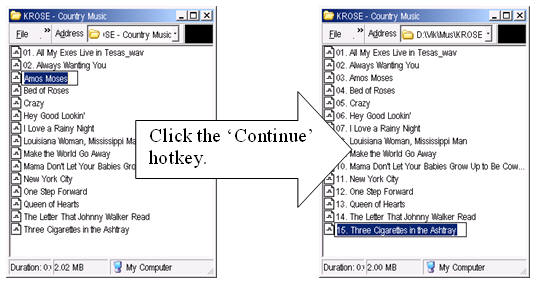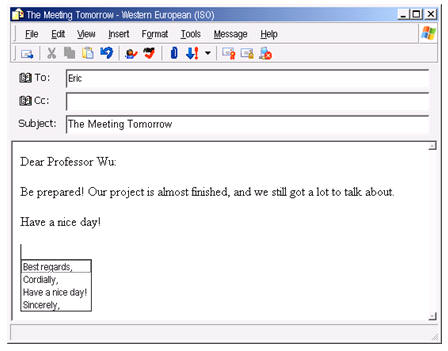
The Development Flow
Sheng-Yuan Chang, Cheng-Hung Chung,
Computer Science & Information Engineering Department,
National Central University, December 20, 2005
Abstract – In this project, 4 novel personal empowering applications were developed in 2 different fields: communication and automation. Cell Remote gives your everyday cell phone another useful purpose: universal remote. Input Redirection enables you to work with multiple devices with one set of input. Control Recognition attempts to auto-complete user’s control tasks by predicting the control pattern. Personal Writing Assistant helps users on daily writing tasks based on searching user’s writing history at each key stroke. All of them shares one common purpose: improving human performance.

The Development Flow
This introduction provides the gist of the primary product in the Linx project. For complete information, implementation details, technical documentation, go check out the download section.
The first problem we targeted on is the accessibility of powerful machines, e.g. PCs. Think about the importance of computers nowadays; there should really be a nice remote for that. TVs are often companied with TV remotes that can effortlessly switch channels or tune the volume up and down. PCs should also have the convenience as TVs. Therefore, we are taking a novel approach to create a PC remote that satisfies most people’s need. Conventional remotes only do a very specific job (for example, stereo remotes change tracks and volume). Our remote solution has the following key points: 1) reuse the popular mobile device, cell phone. Therefore, the hardware cost of our solution is zero! 2) the implementation is completely on web platform. Therefore, any cell phone has a browser can use it. 3) Because this is a complete software solution, it is highly customizable and can be personalized.


Just at the moment that you think that adding new devices is going to boost your performance, another problem emerges: how can I harness with minimum effort? All of them have their own different input controls. Some with a touch pad, buttons on the side, a keypad, or a mouse. It gets really irritating that your hands have to jump back and forth just to make all these things work together!
Input Redirection provides a quick solution by reusing a component, Comment Port, which is already developed for “Cell Remote,” to forward the user input. (In other words, Input Redirection is more like a by-product to Cell Remote.) This allows the user to control many devices through merely one set of input, a keyboard and a mouse.
As you see in the picture, it works like this: if you want to control the notebook on the left, you can just move the mouse cursor across the left border of the primary screen. It’s the same way to move it back. From now on, you can use your notebook to create a bigger workspace without purchasing a new screen. Witch it in action!

This sub-project is inspired by the cell-remote project. We find while we were controlling devices, we actually constantly giving repeated commands from time to time. Having controlling recognition can let computer automatically predict our repetitive task and ultimately perform those tasks for us.

Auto-complete the task of numbering an album
Computers have been a great help on many fields, but a little help has been done to help on a very important daily task: writing. Right now, they only helps are spelling and grammar checkers.
Here, we’ll like to generalize an old technique, AutoComplete, to help users on general writings. AutoComplete has been shown very successfully on filling in short content (name, address, email address, phone number) in specific textboxes (Run command box, browser form field, and search box). Our goal here is to use it on long content (article, diary, email body, or any other writing). It will be very useful when you’re using a device that’s difficult to input, such as a PDA or a cell phone. One interesting usage is that you can import writing history from other sources (famous quotations, Shakespeare, for example) to help your writing, saving a considerate amount of time memorizing and using them in your work right away.

Working with Outlook Express
| File | Info |
| Linx Agent.rar | Source code and executables |
| Linx Web.rar | Source code and executables. Install on ASP.NET server. |
| The Linx Project.doc | The complete report about the Linx project. |
| Personal Writing Assistant.doc | An in-depth report for Personal Writing Assistant. |
| Shared Input.mpg | An short clip demonstrating Input Redirection. |
| Real Web Push.ppt | A PowerPoint file illustrates how the real web push, Hold & Push technique, works. |
| Personal Writing Assistant.ppt | A PowerPoint file illustrates how Personal Writing Assistant can help users. |
| Remote Devices.ppt | Our mobile devices candidates. |
| Linx.mmap | The Roadmap of our project. (MindManager required) |
| Linx.emf | The Roadmap of our project in a image file. |
| Contrology.ppt | A brief study on how to make a remote appealing to the general population. |
If you have any question, or want to provide suggestion or comment, please email to ViktorChang@hotmail.com, or call: 0910628287. Thanks.